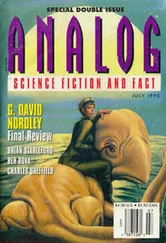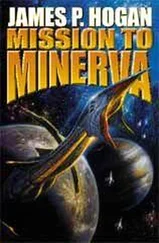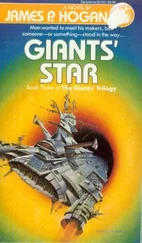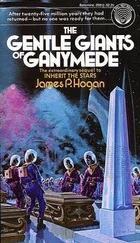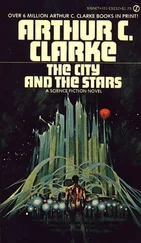James Hogan - Inherit the Stars
Здесь есть возможность читать онлайн «James Hogan - Inherit the Stars» весь текст электронной книги совершенно бесплатно (целиком полную версию без сокращений). В некоторых случаях можно слушать аудио, скачать через торрент в формате fb2 и присутствует краткое содержание. Жанр: Фантастика и фэнтези, на английском языке. Описание произведения, (предисловие) а так же отзывы посетителей доступны на портале библиотеки ЛибКат.
- Название:Inherit the Stars
- Автор:
- Жанр:
- Год:неизвестен
- ISBN:нет данных
- Рейтинг книги:3 / 5. Голосов: 1
-
Избранное:Добавить в избранное
- Отзывы:
-
Ваша оценка:
- 60
- 1
- 2
- 3
- 4
- 5
Inherit the Stars: краткое содержание, описание и аннотация
Предлагаем к чтению аннотацию, описание, краткое содержание или предисловие (зависит от того, что написал сам автор книги «Inherit the Stars»). Если вы не нашли необходимую информацию о книге — напишите в комментариях, мы постараемся отыскать её.
Inherit the Stars — читать онлайн бесплатно полную книгу (весь текст) целиком
Ниже представлен текст книги, разбитый по страницам. Система сохранения места последней прочитанной страницы, позволяет с удобством читать онлайн бесплатно книгу «Inherit the Stars», без необходимости каждый раз заново искать на чём Вы остановились. Поставьте закладку, и сможете в любой момент перейти на страницу, на которой закончили чтение.
Интервал:
Закладка:
"Where’s his civilization, then?" Hunt demanded. "Removed in an enormous celestial garbage truck?"
Laughter from around the table greeted the return of Danchekker’s own gibe. The professor darkened and seemed about to say something obscene. Caldwell held up a restraining hand, but Schorn saved the situation by interrupting in his calm, unruffled tone. "It would seem, ladies and gentlemen, that for the moment we must compromise by agreeing to a purely hypothetical situation. To keep Professor Danchekker happy, we must accept that the Lunarians evolved from the same ancestors as ourselves. To keep Dr. Hunt happy, we must assume they did it somewhere else. How we are to reconcile these two irreconcilables, I would not for one moment attempt to predict."
Chapter Nine
Hunt saw less and less of the Trimagniscope during the weeks that followed the progress meeting. Caldwell seemed to go out of his way to encourage the Englishman to visit the various UNSA labs and establishments nearby, to "see what’s going on first-hand," or the offices in Navcomms HQ to "meet someone you might find interesting." Hunt was naturally curious about the Lunarian investigations, so these developments suited him admirably. Soon he was on familiar terms with most of the engineers and scientists involved, at least in the Houston vicinity, and he had a good idea of how their work was progressing and what difficulties they were encountering. He eventually acquired a broad overview of the activity on all fronts and found that, at least at the general level, the awareness of the whole picture that he was developing was shared by only a few privileged individuals within the organization.
Things were progressing in a number of directions. Calculations of structural efficiency, based on measurements of Charlie’s skeleton and the bulk supported by it, had given a figure for the surface gravity of his home planet, which agreed within acceptable margins of error with figures deduced separately from tests performed on the crystals of his helmet visor and other components formed from a molten state. The gravity field at the surface of Charlie’s home planet seemed to have been not much different from that of Earth; possibly it was slightly stronger. These results were accepted as being no more than rough approximations. Besides, nobody knew how typical Charlie’s physical build had been of that of the Lunarians in general, so there was no firm indication of whether the planet in question had been Earth or somewhere else. The issue was still wide open.
On equipment tags, document headings, and appended to certain notes, the Linguistics section had found examples of Lunarian words which matched exactly some of the labels on the calendar, just as Hunt had suggested they might. While this proved nothing, it did add further plausibility to the idea that these words indicated dates of some kind.
Then something else that seemed to connect with the calendar appeared from a totally unexpected direction. Site-preparation work in progress near Lunar Tycho Base Three turned up fragments of metal fabrications and structures. They looked like the ruins of some kind of installation. The more thorough probe that followed yielded no fewer than fourteen more bodies, or more accurately, bits of bodies from which at least fourteen individuals of both sexes could be identified. Clearly, none of the bodies was in anything approaching the condition of Charlie’s. They had all been literally blown to pieces. The remains comprised little more than splinters of charred bone scattered among scorched tatters of spacesuits. Apart from suggesting that besides being physically the same as humans, the Lunarians had been every bit as accident-prone, these discoveries provided no new information-until the discovery of the wrist unit. About the size of a large cigarette pack, not including the wrist bracelet, the device carried on its upper face four windows that looked like miniature electronic displays. From their size and shape, the windows seemed to have been intended to display character data rather than pictures, and the device was thought to be a chronometer or a computing-calculating aid; maybe it was both-and other things besides. After a perfunctory examination at Tycho Three the unit had been shipped to Earth along with some other items. It eventually found its way to the Navcomms laboratories near Houston, where the gadgets from Charlie’s backpack were being studied. After some preliminary experimenting the casing was safely removed, but detailed inspection of the complex molecular circuits inside revealed nothing particularly meaningful. Having no better ideas, the Navcomms engineers resorted to applying low voltages to random points to see what happened. Sure enough, when particular sequences of binary patterns were injected into one row of contacts, an assortment of Lunarian symbols appeared across the windows. This left nobody any the wiser until Hunt, who happened to be visiting the lab, recognized one sequence of alphabetic sets as the months that appeared on the calendar. Hence, at least one of the functions performed by the wrist unit seemed closely related to the table in the diary. Whether or not this had anything to do with recording the passage of time remained to be seen, but at least odd things looked as if they were beginning to tie up.
The Linguistics section was making steady if less spectacular progress toward cracking the language. Many of the world’s most prominent experts were getting involved, some choosing to move to Houston, while others worked via remote data links. As the first phase of their assault, they amassed volumes of statistics on word and character distributions and matchings, and produced reams of tables and charts that looked as meaningless to everybody else as the language itself. After that it was largely a matter of intuition and guessing games played on computer display screens. Every now and again somebody spotted a more meaningful pattern, which led to a better guess, which led to a still more meaningful pattern-and so on. They produced lists of words in categories believed to correspond to nouns, adjectives, verbs, and adverbs, and later on added adjectival and adverbial phrases-fairly basic requirements for any advanced inflecting language. They began to develop a feel for the rules for deriving variants, such as plurals and verb tenses, from common roots, and for the conventions that governed the formation of word sequences. An appreciation of the rudiments of Lunarian grammar was emerging from all this, and the experts in Linguistics faced the future with optimism, suddenly confident that they were approaching the point where they would begin attempting to match the first English equivalents to selected samples.
The Mathematics section, organized on lines similar to Linguistics, was also finding things that were interesting. Part of the diary was made up of many pages of numeric and tabular material-suggesting, perhaps, a reference section of Useful Information. One of the pages was divided vertically, columns of numbers alternating with columns of words. A researcher noticed that one of the numbers, when converted to decimal, came out to 1836-the proton-electron mass ratio, a fundamental physical constant that would be the same anywhere in the Universe. It was suggested that the page might be a listing of equivalent Lunarian units of mass, similar to equivalence tables used for converting ounces to grams, grams to pounds… and so on. If so, they had stumbled on a complete record of the Lunarian system of measuring mass. The problem was that the whole supposition rested on the slender assumption that the figure 1836 did, in fact, denote the proton-electron mass ratio and was not merely a coincidental reference to something completely different. They needed a second source of information to check it against.
Читать дальшеИнтервал:
Закладка:
Похожие книги на «Inherit the Stars»
Представляем Вашему вниманию похожие книги на «Inherit the Stars» списком для выбора. Мы отобрали схожую по названию и смыслу литературу в надежде предоставить читателям больше вариантов отыскать новые, интересные, ещё непрочитанные произведения.
Обсуждение, отзывы о книге «Inherit the Stars» и просто собственные мнения читателей. Оставьте ваши комментарии, напишите, что Вы думаете о произведении, его смысле или главных героях. Укажите что конкретно понравилось, а что нет, и почему Вы так считаете.

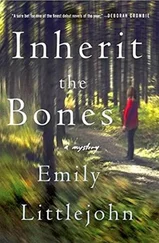
![Лаура Бренз - Потомственная ведьма[Inherit the Witch]](/books/79609/laura-brenz-potomstvennaya-vedma-inherit-the-witch-thumb.webp)
